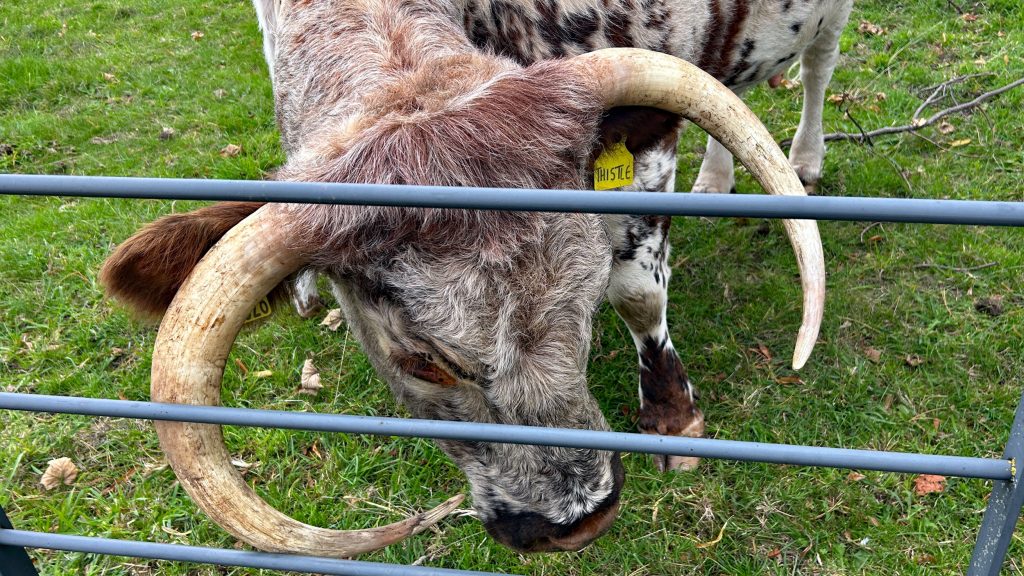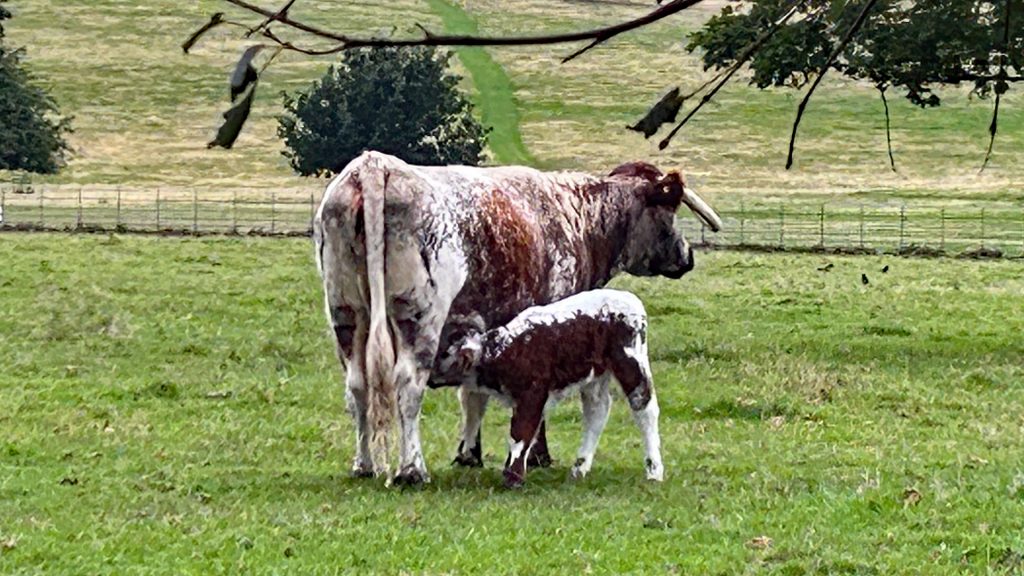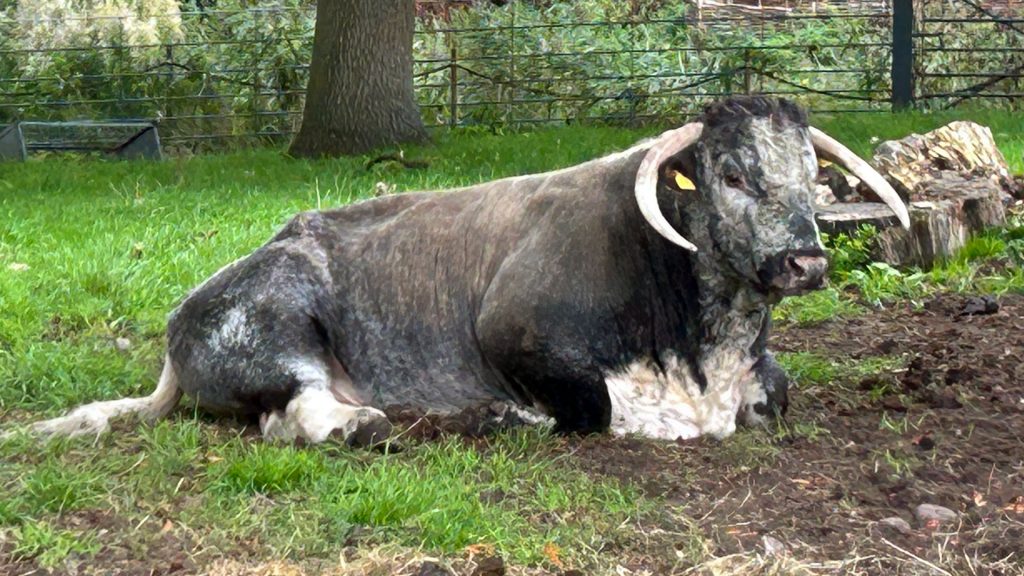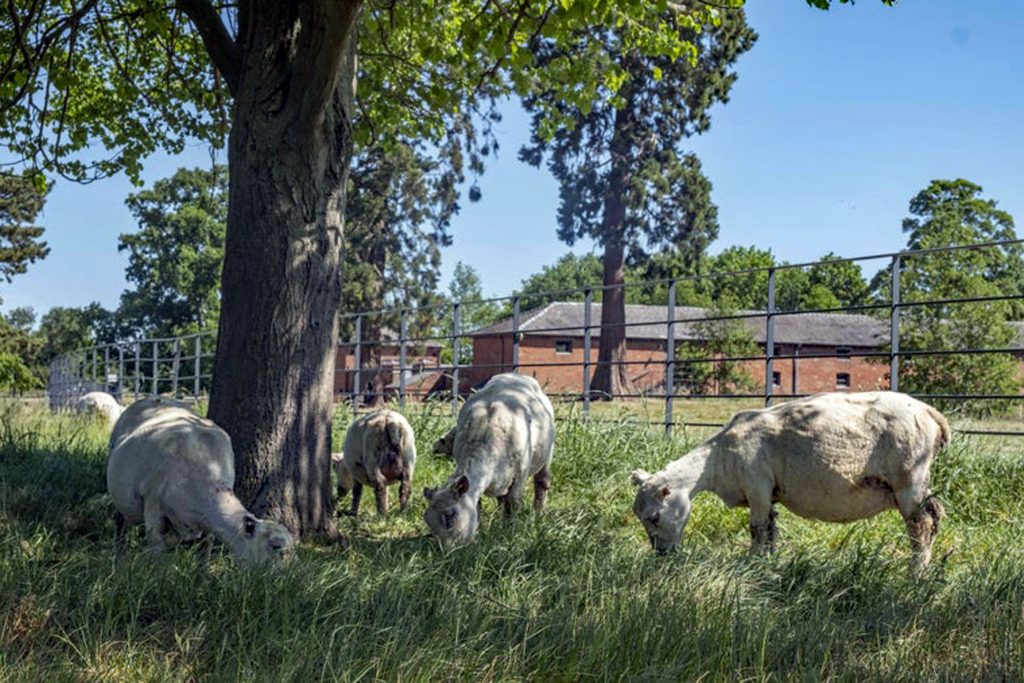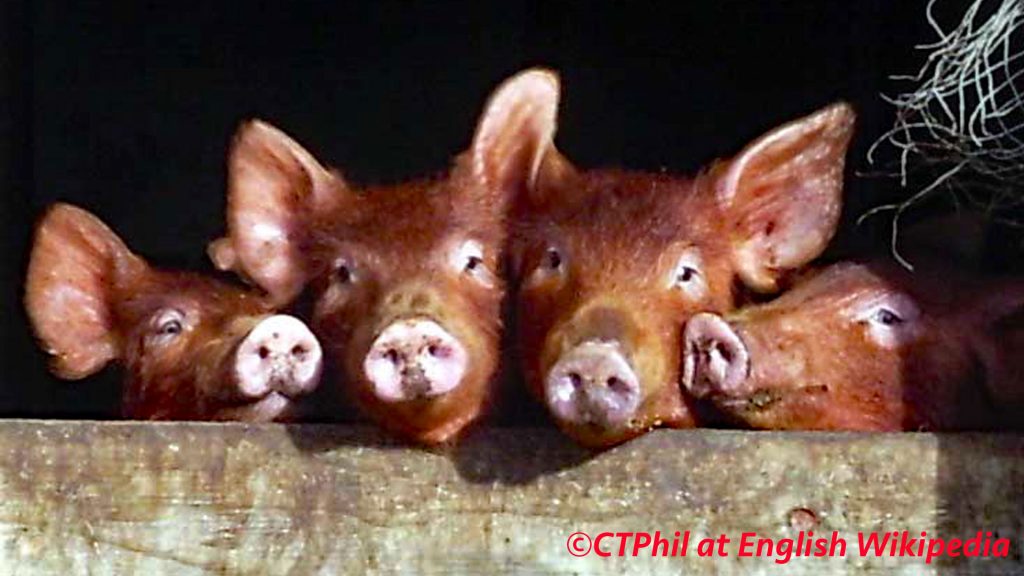We moored at Tixall Wide for a total of nine days before moving on Thursday 25th and when we did move we went another whole mile to moor at Essex Bridge 2 day moorings.
Essex Bridge is a Grade I listed packhorse bridge over the River Trent near Great Haywood Junction, spanning the Trent 100 metres downstream of its confluence with the River Sow, it was built in the late sixteenth century by the Earl of Essex, a favourite of Queen Elizabeth I. The Earl lived nearby at Chartley Castle. It is now the longest remaining packhorse bridge in England with fourteen of its original forty round span arches left and has been described as “perhaps the least altered old bridge in the county” and carries the long-distance footpath The Staffordshire Way over the River Trent, linking the Trent and Mersey Canal tow-path with the bridleway through the Shugborough estate to Cannock Chase.
Friday morning we walked over Essex Bridge to visit the Sugborough Estate Park Farm and Shugborough Hall. Built on the estate in 1806 Park Farm was a centre of innovation and learning. Today the farm is still a working farm, home to historic breeds of animal, and central to the estate.
Despite their horns, English longhorn cattle have an incredibly docile nature. They are excellent mothers and tend to have no trouble calving independently, and can even keep breeding past the usual cattle age due to their longevity.
The farm also raises Southdown Sheep for both wool and meat as well as Tamworth pigs
The Southdown is a British breed of small domestic sheep. It is a shortwool breed, and the basis of the whole Down group of breeds. It was originally bred by John Ellman of Glynde, near Lewes in East Sussex, in about 1800 and has been exported to many countries where it is usually bred for meat and not wool.
The origins of the Tamworth pig are not known. It appears to have originated shortly before or after 1800 near the town of Tamworth in south-eastern Staffordshire, close to Warwickshire border. There are many theories of the origin of its unusual red colouration: that it derived from a wild jungle pig brought from India by Sir Francis Lawley; that it derived from Irish pigs known as ‘Irish Grazers’, brought to Drayton Manor in Drayton Bassett by Sir Robert Peel; that Peel had not used these, but a boar brought from the West Indies; or that the colour was due to a West African Guinea Hog descended from pigs from Portugal, or to a red pig imported in about 1750 from Barbados. The colour may have been fixed by selective breeding alone. The Tamworth was recognised as a breed in 1865 and entered at the Royal Show in that year. A herd-book was started in 1885, and a breed society, the Tamworth Incorporated Pig Breeders Association, was formed in 1906.
After a walk around the grounds our visit to the farm and a cup of tea in the tearoom we went to visit the main event – the Shugborough Hall. There are, basically, three sections, the servants hall, the Shugborough Hall itself and Lord Litchfield’s apartment.
The visits to the servants hall and Lord Litchfield’s apartment were great, the former because it gave clear insight into how the servants lived their lives and the later because Sue and I both remembered many of the photographs that adorned the walls of the apartment that graced newspapers and magazines in the 1970’s and 80’s.
The main hall we (well me) found to be rather sterile. I could look around the servants working areas and imagine their lives, I could do the same in Lord Litchfield’s apartment, many of the photos adorning the walls Sue and I could remember seeing in newspapers and on the telly in the 1970’s and 80’s. The hall looked more to me like a stage set built to give an impression of a bygone era but not quite managing to succeed. The National Trust have many plans to enhance the visitor experience so perhaps . . .
Unfortunately photography was not allowed in any of the building interiors.
After a very pleasant but exhausting day it was decided that cooking was not going to happen on our boats so we all went to the Clifford Arms for our 3rd and final (for this trip) visit, this time for dinner. If you did not read the short review on the Clifford Arms on last weeks blog you can access it by clicking here
The following day we had our longest (4.75 miles) and last cruise of the month to Rugeley. We have visited this town several times before, though it has no boater services i.e. water point, elsan, rubbish disposal, it does have is a Tesco and a Morrison both more more than two minutes walk from the visitor moorings and an Aldi just another 350 metres further. Also of interest to us was a local launderette as we have a mountain of dirty laundry to sort.
